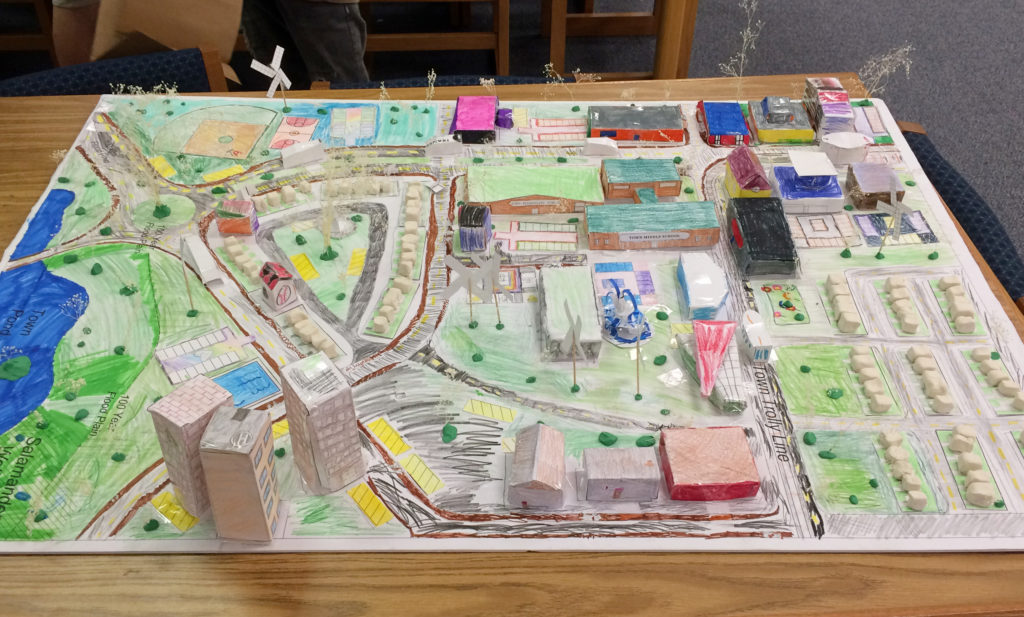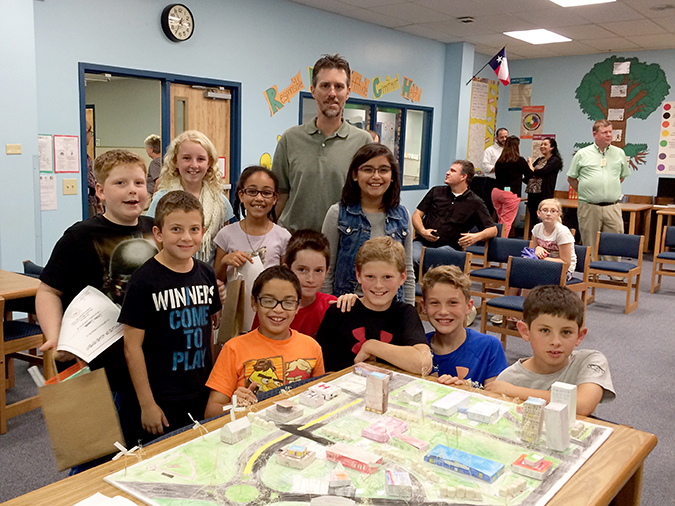
From the American Institute of Architecture (AIA), to Kipp Flores Architects to Faubion Elementary School, this year marks the first graduating class of fifth-graders to complete the Panther’s innovative architecture program. Students who previously had not ventured outside Leander ISD’s borders are now collaborating with some of the most accomplished architects in our area, state and country.
The program was started two years ago with a cohort of third-graders at Faubion ES. Parent Cameron Thayer, an architect with Kipp Flores Architects, worked with administration and staff to implement a program that would use architectural skills to not only help students to create a piece of architecture, but to help practice math skills, develop ingenuity and decision-making.
The Architecture in Schools program is a three-year course during which students in the PACE math class participate in a one-hour architecture lesson and activity every week during the fall semester — eight hours total. The activities each year are specifically designed for the learning abilities of its respective students, with third graders building a home, fourth graders building a school and fifth graders building a neighborhood.
The class is also given a “behind the scenes” tour of their school, learning about the electrical and internet components, parking lot grading for water runoff, energy efficiency and conservation tools, designs for drainage, etc.
Students are given supplies, then work in groups to design and build their project during class. Curriculum and supplies are provided by the AIA Austin chapter with instruction provided by volunteers at Kipp Flores Architects.
At the end of the semester, students present their projects to their parents, teachers and some members of the local architect community. They will also take a field trip at some point in their three-year tenure to tour classrooms and facilities at the University of Texas at Austin School of Architecture, where their projects will be displayed alongside other projects from participating schools throughout the greater Austin area.
“It’s like a light turning on for so many of these kids, all of a sudden becoming aware of the design and the purpose of the things around them,” said Thayer. “They’re noticing solar panels in their neighborhood, or the grading on their lawn, or wondering why a building wasn’t designed with bathrooms on the other side, or hearing about water recapture on the news, and thinking about their environment on a whole other level.”
Thayer went on to praise the school’s commitment to the program, noting the sacrifice of important instructional time during math class. He notes, however, that the skills students are learning seem to marry perfectly with concepts they are learning in the classroom, giving them an important opportunity to apply learning in the real world.


![In the Automotive Program of Study at Rouse High School, students study automotive basics and automotive technology, and eventually complete a practicum in transportation systems.
“If I didn’t have this program, I wouldn’t feel really prepared for my future plans – I want to be a BWM technician,” Glenn High School student Javier Peña said. “And the fact that there’s a program out there in this district that [prepares students] is just amazing.”
Full video at YouTube link in bio.
#NoPlaceLikeLISD](https://news.leanderisd.org/wp-content/plugins/instagram-feed/img/placeholder.png)
